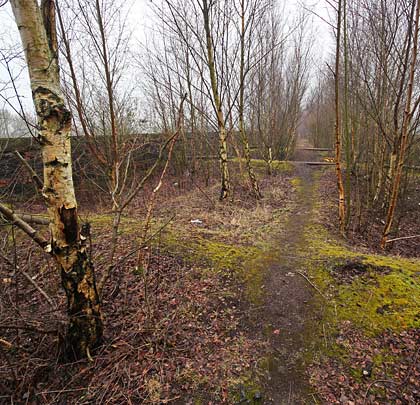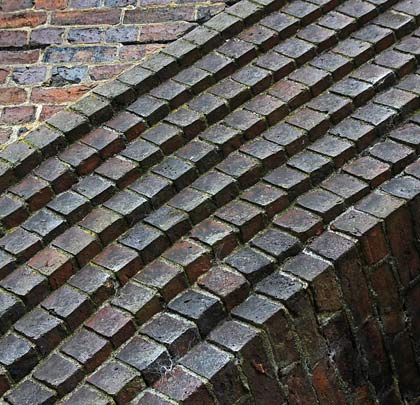Parkhead Viaduct
Parkhead Viaduct


















Parliamentary authority to construct a line connecting Oxford with the West Midlands was granted to the Oxford Worcester & Wolverhampton Railway (OW&WR) on 4th August 1845 and this was opened in stages between 1852 and 1853. In 1860 the company amalgamated with both the Newport Abergavenny & Hereford and Worcester & Hereford railways to become the West Midland Railway; this was, in turn, absorbed into the Great Western Railway in 1863.
Construction was overseen by the GWR, with Isambard Kingdom Brunel its chief engineer. Progress was slow and by June 1849 all the money raised had been spent with only the middle section close to completion. The Great Western embarked on a legal fight with the Railway Commissioners, prompting the OW&WR to switch its allegiances to the London & North Western and Midland railways in February 1851, signing agreements which allowed those companies to finish and then run the line themselves. However the GWR was successful in challenging that arrangement, thereafter offering the company a similar deal on their own terms.
The death of Francis Tredwell, one of the railway’s contractors, had resulted in a lengthy legal battle with his family firm over financial claims, bringing work to a halt for several years. It took Brunel’s intervention to release the money that allowed his brothers to continue construction work in 1851. And the non-payment of another contractor, Robert Marchant, resulted in disturbances known as the Mickleton Tunnel Riot which prompted navvies to down tools whilst magistrates were brought in to read the Riot Act.
The railway was nicknamed the “Old Worse and Worse” and was described by LTC Rolt as a “shocking railway”. On 23rd August 1858, a serious accident between Round Oak and Brettell Lane resulted in the death of 14 people and serious injured 50 more. A Sunday excursion train of 45 carriages, heading to Worcester and hauled by two engines, twice suffered catastrophic failures of the couplings, ultimately resulting in a third of the carriages running loose and becoming derailed. It was described by Board of Trade inspector Captain Tyler as “Decidedly the worst railway accident that has ever occurred in this country”.
Parkhead Viaduct, to the south of Dudley, was erected in 1850 as a wooden structure, carrying the railway over Parkhead Locks on the Dudley Canal. The construction methodology was determined by the soft ground thereabouts, resulting in the sinking of wooden piles to support trestle piers. However, early in its operational life, the viaduct began to sink. The GWR board authorised the expenditure of £7,000 in March 1877 to encase the structure in brick. Contractor C J Smith of Westminster Chambers was successful in tendering for the work at a cost of £9,400, with the bricks supplied by Phillips & McEwan of Dudley. The work was complete by the end of 1878. However, despite the GWR also spending £250 on the acquisition of mine workings beneath the structure, it continued to suffer from the effects of ground movement. Photographs show that rail level was about 3 feet above the top of the parapet in the 1980s.
164 yards long, the viaduct comprises eight segmental arches supported by tapering piers; it curves to the east on a radius of about 40 chains. The northernmost spans are heavily strapped; all the spandrels and parapets are tied together with bars and large pattress plates. Between the third and fourth spans from the south, the east side of the structure is badly bulged whilst the west-side parapet at the north end is leaning outwards. Since closure, in an attempt to prevent the worsening of these defects, the ballast and fill has been removed to relieve the load on the arches.
Passenger services over the Stourbridge-Dudley section of the OW&WR – incorporating Parkhead Viaduct – had been withdrawn by 1965, but goods trains continued to use it until 1993, when the line north of Round Oak was mothballed. The track over the viaduct was removed in 1999.







